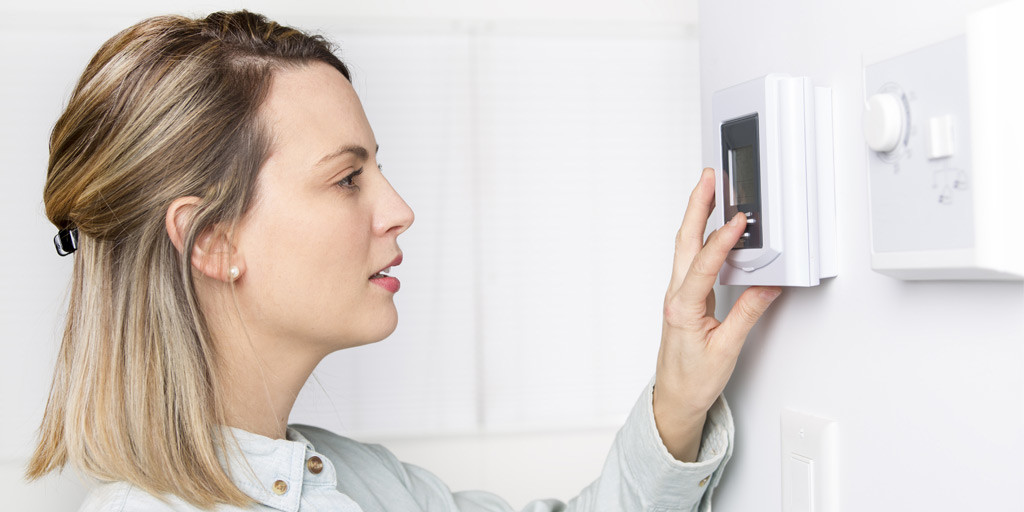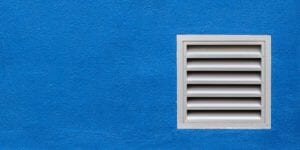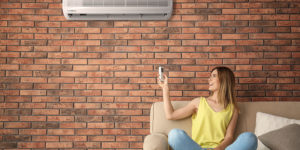HVAC Systems: What You Need to Know
Heating, ventilation, and air conditioning (HVAC) systems are installed in millions of homes across the world and provide a simple, user-friendly way to get their living space as comfortable as possible. And while these units can be easily controlled from a few buttons and knobs on a thermostat, the science and engineering behind your comfort is something you might need to know in case repairs or replacements are in order.
This article dives into the function, operation, and anatomy of HVAC systems. We’ll also be discussing maintenance concerns and what you need to know before calling in a contractor. Finally, we’ll be discussing which HVAC brands can be relied upon to keep your home comfortable for years to come. From filters to compressors and everything in between, here’s your ultimate guide to HVAC systems, maintenance, and brands.
HVAC Explained
Like we’ve mentioned, HVAC systems encompass three distinct methods of climate control. Before we get into how an HVAC system works, let’s take a moment to outline exactly what an HVAC system does.
What is “HVAC”?
HVAC stands for heating, ventilation, and air conditioning. These systems can take on many shapes and forms, but they must share each of these three functions to be considered an HVAC system.
The heating component of HVAC systems is often created by heat pumps and similar devices. Heating is one of the least complex systems in an HVAC system, and heaters can easily be purchased on the consumer level to manage smaller rooms.
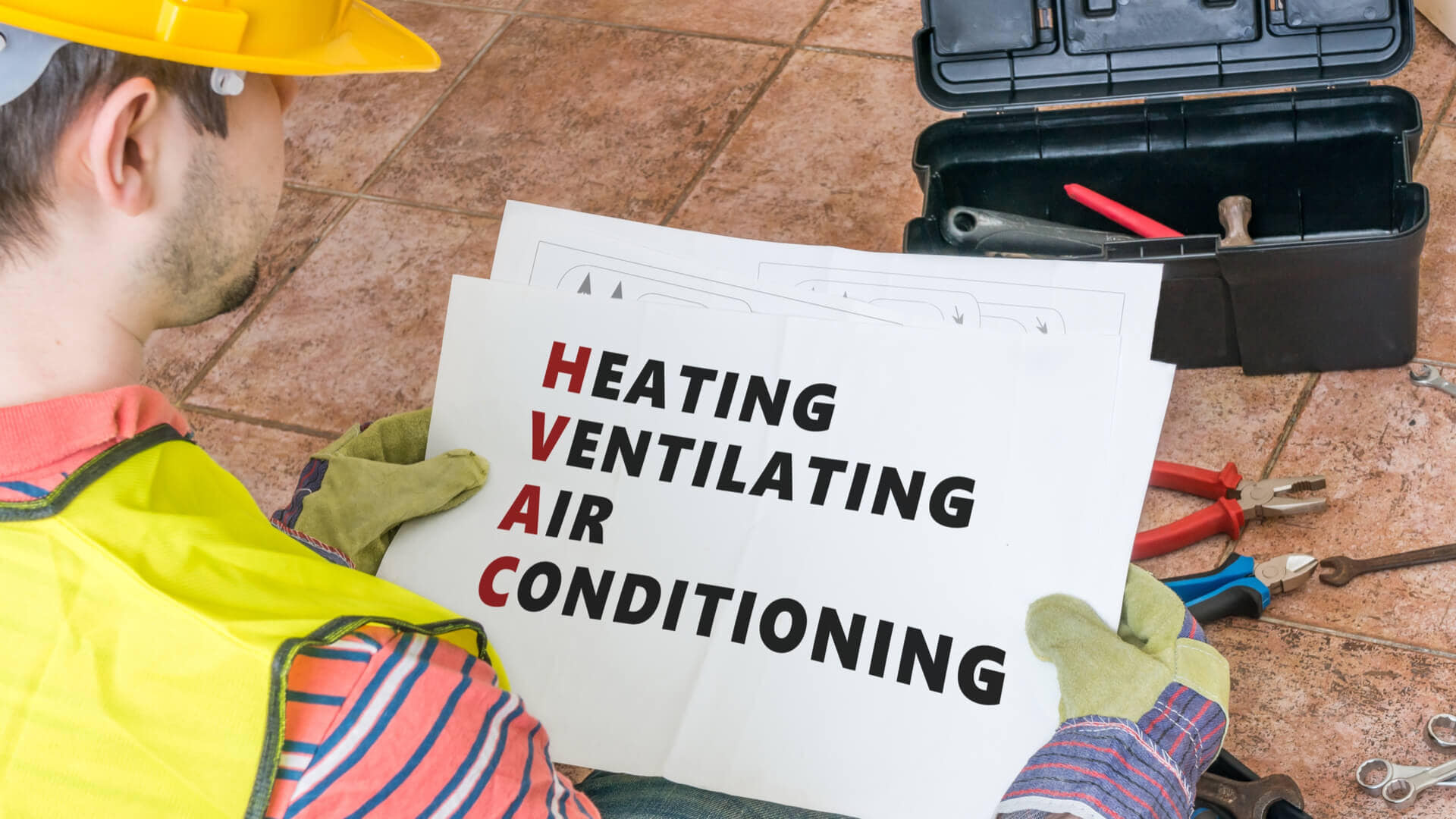
The ventilation system is one of the most important components of the unit. By constantly replacing indoor air with outdoor air, ventilation systems reduce stale odors, ensure proper air quality, and in some cases, reduce the growth of harmful bacteria and mold. This functionality is especially important for humid climates or living spaces in highly polluted areas.
The final component of an HVAC system is air conditioning. Air conditioning removes heat (and often moisture) from a living space to ensure that comfort is achieved. Air conditioning is highly valuable in humid and hot climates and is generally the most complex of the three components of an HVAC system. Proper air conditioning involves a dehumidifier working in conjunction with a compressor and proper ventilation of heat.
Anatomy of the Central Air System
The most popular means of cooling homes in North America is the central air system. This is a variation of an HVAC system that uses a split design, which means that some of the components of the unit, like the compressor, will remain outside of the home, while the heating elements and other components will be inside in the second location.
Central air systems are referred to as “central” since all components of heating and cooling are contained in one area and then dispersed throughout the home through ducts and other means of forced air. You may hear this term “forced air” utilized by contractors and other HVAC technicians; it simply refers to the functionality of a central air system and the means through which it forces treated air to the right locations within the home.
All functionality of central air systems begins with the thermostat. This device is usually placed at eye level and can be read by homeowners to learn the current temperature of the home. It can also be programmed for different functionalities and schedules.
When the thermostat detects that a home needs to be treated to match the desired temperature or program, it sends a signal to the central air system to begin operation. Let’s say, for example, that it needs to cool down the home. The central air system will send the signal to the main assembly to begin the air conditioning component of the HVAC system. For air conditioning, the central air system will turn on the compressor and begin the process of cooling your home. This process differs between systems, but typically uses the following components:
- Refrigerant
- Evaporator
- Compressor
- Fans & Blowers
First, the refrigerant is pumped through a component known as an evaporator, which releases cool air into the home. Fans and blowers funnel this cool air outward, and heat from the warm air in the home returns to the refrigerant and heats it up. This heated refrigerant is then pumped outward to the compressor, which is contained outside the home.
The compressor increases the temperature of the refrigerant and pumps it through thin fins that line the walls of the compressor. These fins allow the heat to escape into the air and be blown out of the compressor unit by the fan. Now cooled, the refrigerant can be returned to the home to enter the evaporator and repeat the process until the thermostat turns off the system.
The heating component of the HVAC system is generally less complex. When it comes to a central air system, a furnace is utilized in the primary housing of the unit. This furnace is supplied with fuel, such as natural gas, and the heat generated from the furnace is blown into the rest of the home through the forced air system.
As we’ve stated, the central air system is not the only system that uses this process. Not all HVAC systems are central air systems, though, and not all central air systems are created equally.
Single and Multi-Stage Units
When it comes to central air systems, the major consideration to make is whether or not to go with a single or multi-stage system. Single stage central air systems are quite popular and operate precisely as we’ve described above. When the thermostat detects an anomaly, the system turns on and operates until it is told to stop.
However, with a single stage system, the power and efficiency output of the unit is binary. This means that your central air system is either operating at full capacity or not at all. This reduces the efficiency of the single stage unit overall but aids in maintenance and operation.
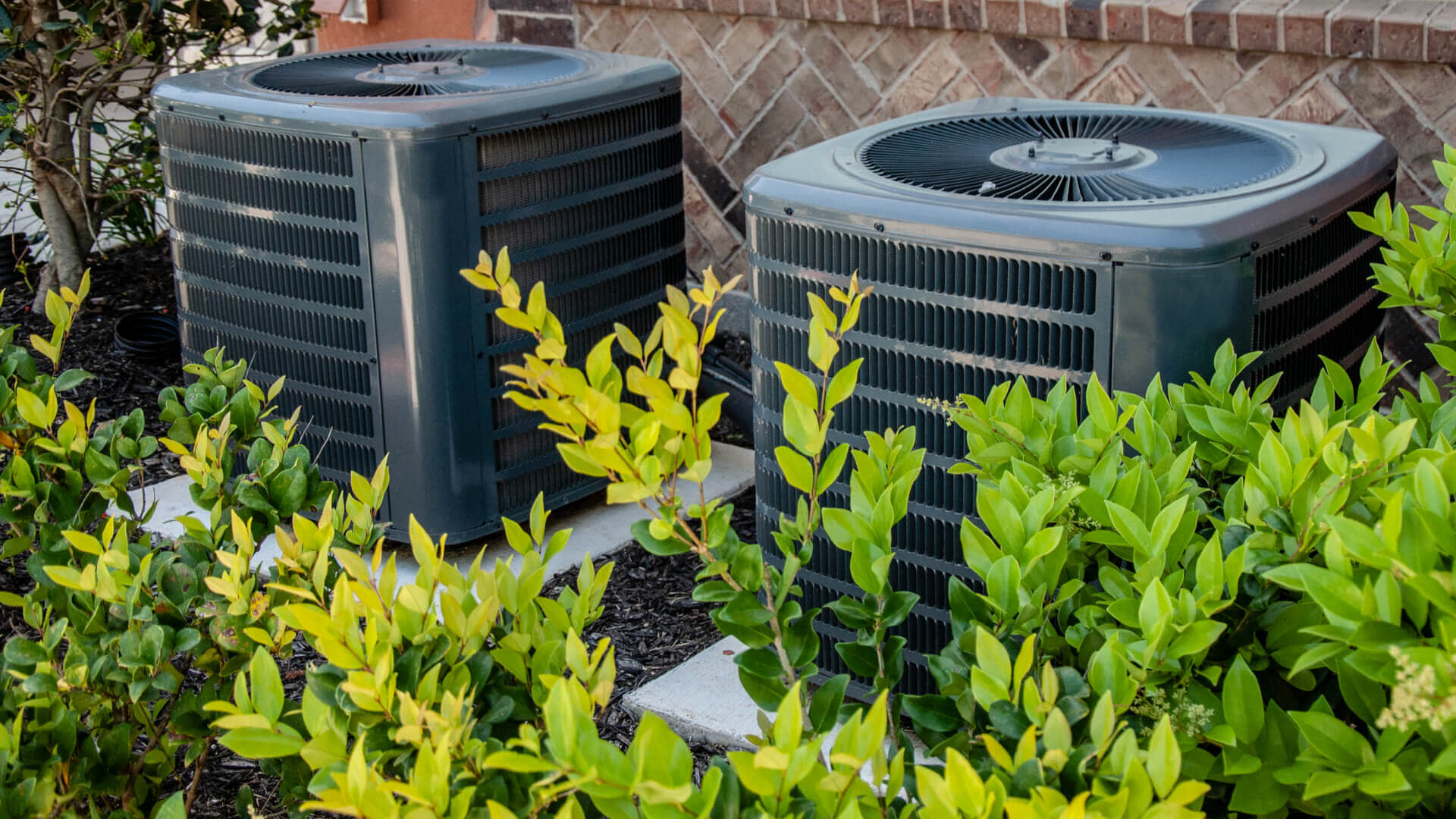
This is a sharp contrast to multi-stage units, which can operate at either full power or a variety of partial power settings. These stages are controlled automatically by the thermostat, so there’s no difference in operation on the consumer level. Multi-stage units are also typically more energy efficient and preferred for locations that experience moderate changes in temperature.
Multi-stage units are less popular, though, and more complex, which can make them more expensive to maintain. Due to the popularity of the single stage unit, alongside its ease of operation and maintenance, most contractors in North America will tell you to select a single stage unit rather than a multi-stage air system. If you’re still on the fence or don’t quite know which setup is right for you, consider the following:
| Units | Pros | Cons |
| Single Stage HVAC |
|
|
| Multi-Stage HVAC |
|
|
Portable and Unique Units
Not every HVAC system will require outdoor compressors and indoor furnaces. The basic components of the HVAC system can be placed in a variety of different units to best match your home and needs.
The most common HVAC system that is not a central air system is the window-mounted AC units.

These units are popular in older apartment buildings, bonus rooms, and sheds across the country, and they come in variable shapes and sizes. While some can handle all three components of HVAC, some are only designed with a compressor and operate as an air conditioning (AC) unit only.
The benefit to a window-mounted HVAC is independence. In larger homes that utilize a central air system, some rooms may take longer to cool or warm than others depending upon many factors. Adding a window-mounted system, though, can allow homeowners to control the temperature of each room more effectively. Likewise, all components of the HVAC system are built right into the unit. Window-mounted units can also be mounted directly into a wall, and both are easy to maintain and replace.
Window-mounted units are generally less effective, though, than whole-home forced air setups. These will take longer to cool, remove fewer pints of condensation from the air, and ventilate less effectively. The same is true for the other portable units on our list. Still, those who dislike the wall or window-mounted design can split the difference with a ductless mini-split unit.
Ductless mini-split units also referred to as ductless units, are based on the multi-split design of the central air system but miniaturize the components to their base forms.
Mini-splits leave a smaller compressor on the outside of a home and run small tubes into the home and to the main unit, which is typically a wall-mounted, rectangular unit near the ceiling. This unit then dispels the air directly, removing the need for ductwork to reach individual rooms.
Like the window or wall-mounted unit, you’re limited to just one window with the ductless unit. Likewise, these units are more expensive and will take more maintenance than their wall-mounted cousins. If your aim is an HVAC system with the least amount of maintenance and installation time possible, then perhaps portable HVAC units are preferable.
More so than other system types, the portable HVAC unit is almost entirely made up of affordable, air conditioning-only units. This is precisely why most portable units are referred to as portable ACs rather than HVACs. Still, the portable air conditioning category has developed significantly in the past few years, and many portable systems are available that allow for ventilation, air conditioning, and heating. Portable HVAC systems are all-in-one units, only utilizing one or two hoses connected to a nearby window to access outside air. This allows for ventilation as well as better circulation.
Portable units are typically the most affordable but the least effective. These tend to take up a significant amount of room in a home while only remaining effective for one large room or two small rooms with a means for the air to naturally circulate between them. Because of this, portable ACs are typically regulated to semi-finished basements, bonus rooms, and similar living spaces. Despite the innate flaws in many of these more affordable designs, the market is wide open for HVAC, and manufacturers are well-aware that not everyone can afford a ductless, central air system to cool their living space. We’ll be getting into the specific brands you need to look out for a little bit later on.
HVACs Systems: An Overview
| Category | How it Works | Pros | Cons | Best For? |
| Central Air Systems (Split HVAC Systems) | Compressors, heat pumps, and furnaces work together to condition air, which is then forced into the home through a series of ducts |
|
| Larger homes, pre-ducted homes, and more extreme climates |
| Multi-Split/Mini-Split Systems | An external compressor/heater pumps treated air to a single bar that releases air into the home without the use of ducts |
|
| Bonus rooms, picky residents, specialty rooms, ductless homes, and smokers. |
| Wall/Window-Mounted HVAC Units | Compressors, heaters, and fans are all built into a large rectangular unit to mount into a window or wall |
|
| Apartments, dormitories, bonus rooms, and basements |
| Portable HVAC Units | A central unit uses air from a hose connected to a nearby window to heat and cool a room or smaller space |
|
| Basements, bonus rooms, specialty rooms, and sunrooms |
Air Filtration
Of course, cooling, heating, and ventilating air mean that air quality maintenance is a must. For most units, this means utilizing an air filter. Air filters are small, insertable filters that either trap dirt and debris heading into an HVAC unit or keep dirt and debris from coming back out of one. These filters range from simple wire and foam inserts in portable and window-mounted units all the way up to pleated electrostatic air filters and large box filters in central air systems.
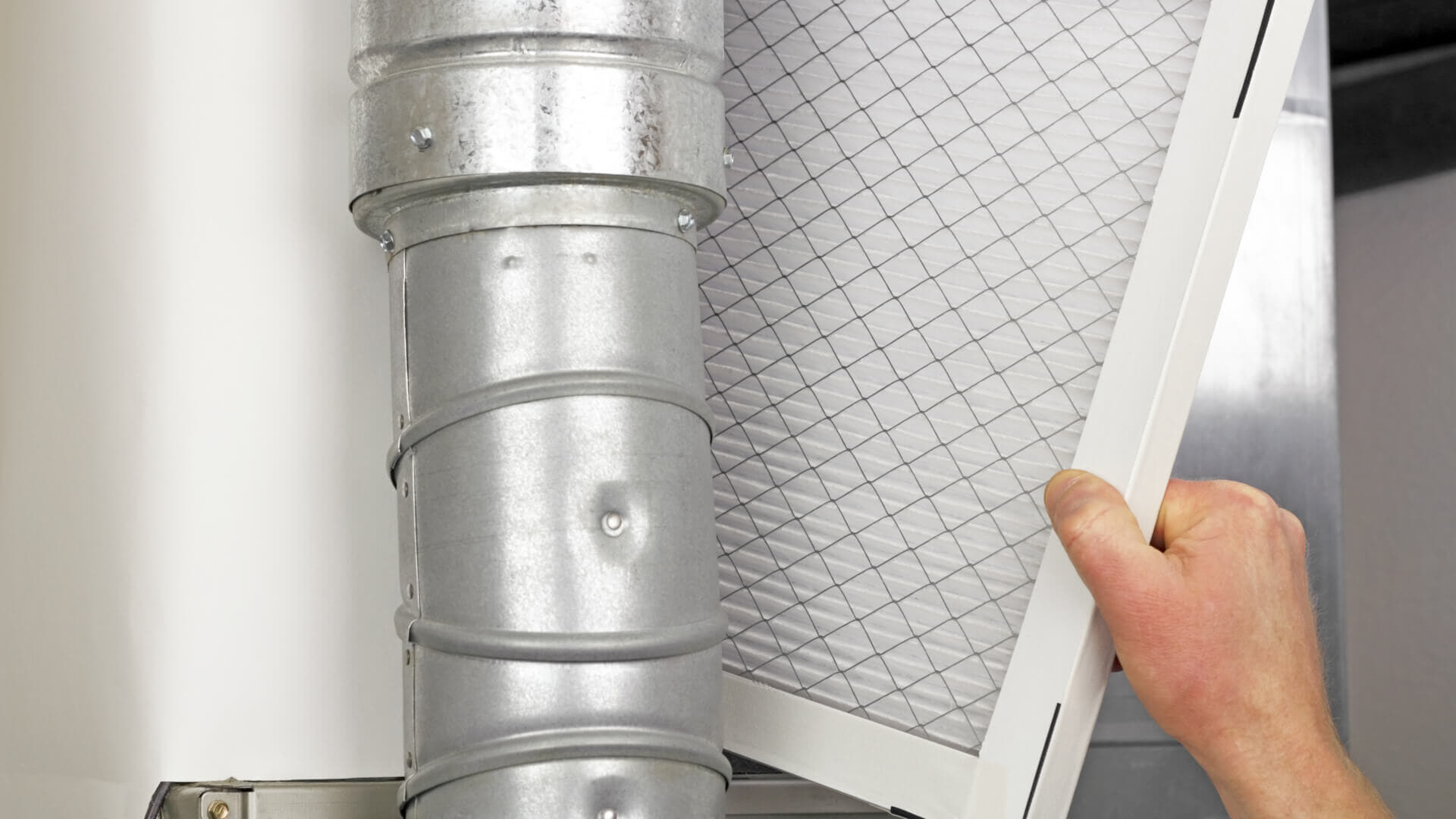
In most instances, you’ll want to utilize disposable filters. These filters are designed to pick up dirt and debris on a microscopic level. Once the filter is full, homeowners simply dispose of the old filter and replace it with a new one. Disposable filters are far and away the most effective means of maintaining proper air quality with a central air system and other such HVAC systems. It is worth mentioning, though, that washable filters have become somewhat popular. These filters, also referred to as electrostatic filters, operate using positively charged air molecules that pass through the filter. Much like how static electricity can draw small objects to it, these filters then draw in small dirt and debris.
Washable filters are also popular in large part due to their ease of use. There is no recurring cost with a washable filter—simply rinse off the filter every few weeks and continue use. Disposable filters have been known to be more effective, however, at maintaining air quality. While these filters do come with recurring costs, they involve far less exposure to allergens and debris than washable filters.
Which filter you prefer is often up to you, although some central air systems will require one or the other. Generally speaking, disposable air filters are more effective, easier to use, and can be more affordable in the long-run.
The Problem of Humidity
As we’ve mentioned before, the problem of humidity is worth considering when purchasing an HVAC unit. HVAC systems often come with dehumidifiers, which are often stored in the central unit itself and dispose of the produced condensate in one way or another. For central air systems, condensate is often piped to the home’s plumbing. This is similarly true for most other types of HVAC systems, save for the portable HVAC system. You will typically need to empty out the condensate yourself if operating one of these units.
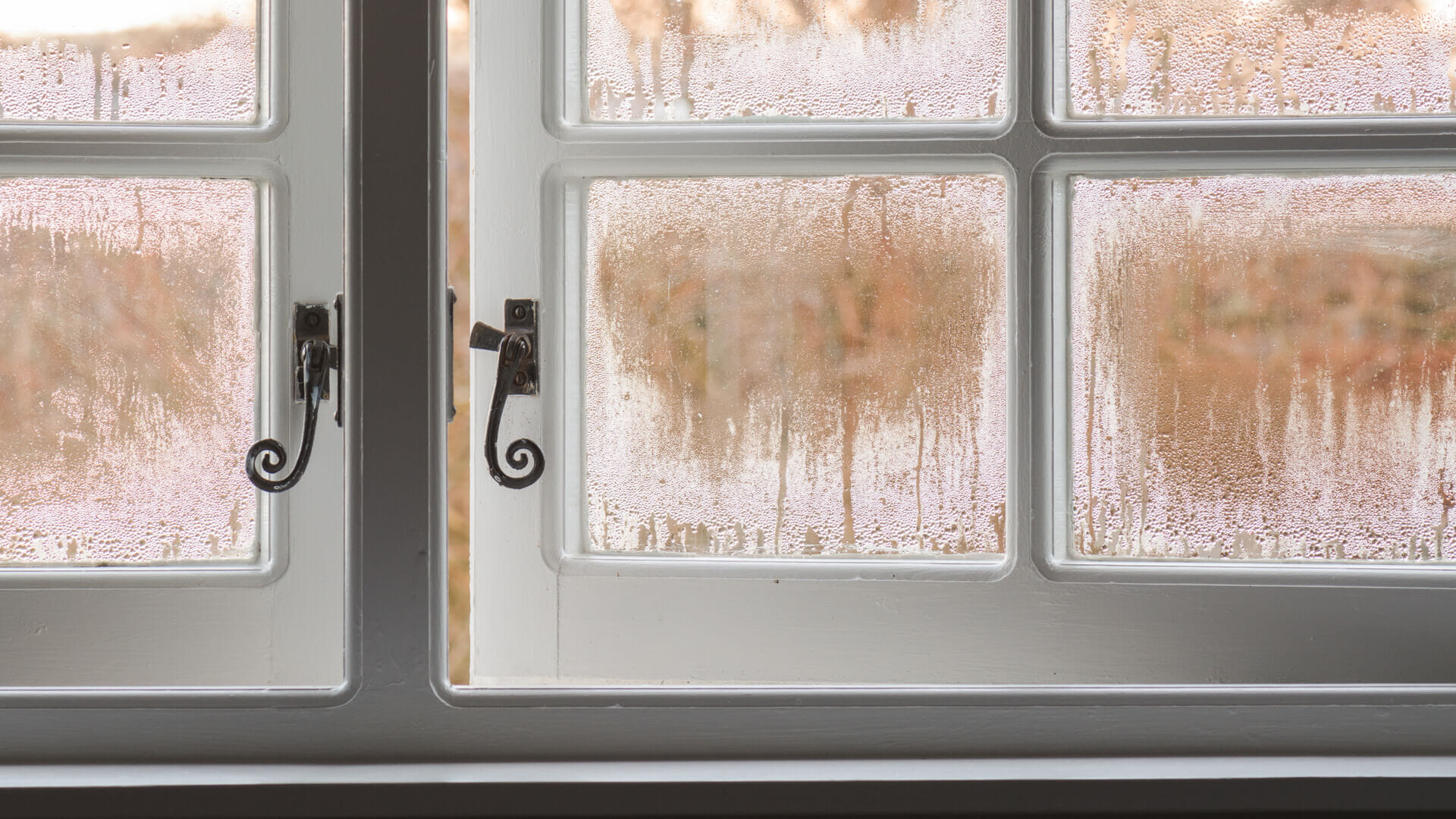
A dehumidifier is monumentally important for wet climates. Too much humidity in the air can breed mold, attract insects, and eventually compromise the components of the HVAC system and affect your health. This is why most HVAC systems are equipped to alter reduce humidity by about 50%. Some climates, though, are so dry that it is recommended that a whole-house humidifier is installed to make the air inside more tolerable. Much like with dehumidifiers, an HVAC equipped with a humidifier can alter the humidity in living space by about 50%.
Regardless, if your climate is either extremely wet or extremely dry, the problem of humidity is one that needs to be taken into special consideration. We strongly recommend going over the problem of humidity with a regional or local technician to ensure that your climate is going to be a good match for your HVAC system.
HVAC Maintenance
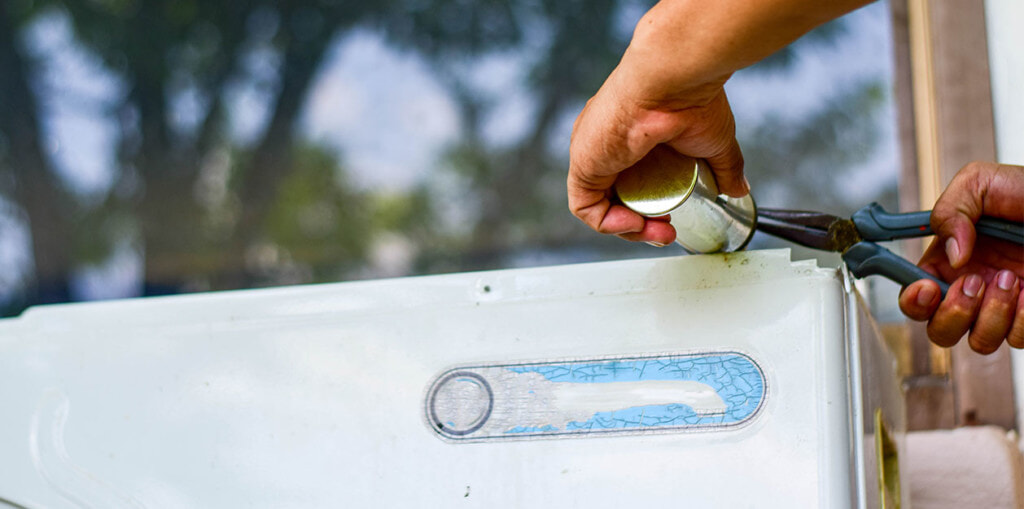
Now that we’re familiar with the various components and operations of an HVAC system, we’ll need to look into possible issues of maintenance. Knowing how to care for your HVAC system is an important part of maintaining air quality as well as preserving and extending the lifespan of your unit.
DIY Work
The most common form of HVAC maintenance is the maintenance of the air filters, which can be done by either washing out the filter or replacing it entirely. For washable filters, we recommend doing this monthly. For replaceable filters, be sure to replace your filter either seasonally and monthly, depending upon the frequency of use and the number of occupants and pets in the home.
For central air systems, you will also need to ensure that your compressor is clear of debris. Since the compressor fins need to be accessible to air to properly release heat from indoors, you’ll need to rinse out these fins to clear out leaves and other products from blocking the unit. This needs to be done from the inside out, and any debris within the compressor needs to be removed periodically. You’ll also want to clean out registers and duct entrances and ensuring nothing is blocking them, replace the water panel periodically, and use the unit sparingly in the fall and spring.
Choosing the Right Contractor
Often with HVAC units, the more work you do yourself, the less you’ll need to call in a technician. However, periodic professional maintenance cannot be avoided completely. If your system is down and your normal troubleshooting methods come up fruitless, then it is time to call up a contractor.
As with all contractors, we recommend seeking out a referral first. Speak to friends and family members that may have already worked with a contractor before, and see if they know of any that they trust. If referrals do not work, then online reviews may be your next best option. While we don’t recommend using online reviews as a sole method of finding a contractor, it may point you in the right direction, or more often, steer you away from the wrong direction.
Licenses and Quotes
Once you’ve found a contractor you feel as if you can trust, you’ll need to meet with them for the quote and make sure that this relationship is going to be mutually beneficial. When scheduling a quote, you’re going to want to look out for contractors that are too quick to have you sign on the dotted line.
Every HVAC system is different, and there are many components that might be damaged or otherwise non-functioning. This is why you need to make sure you don’t get a quote until your HVAC system is inspected. If a contractor wants to give you a quote before examining the unit themselves, you may want to find a different contractor.
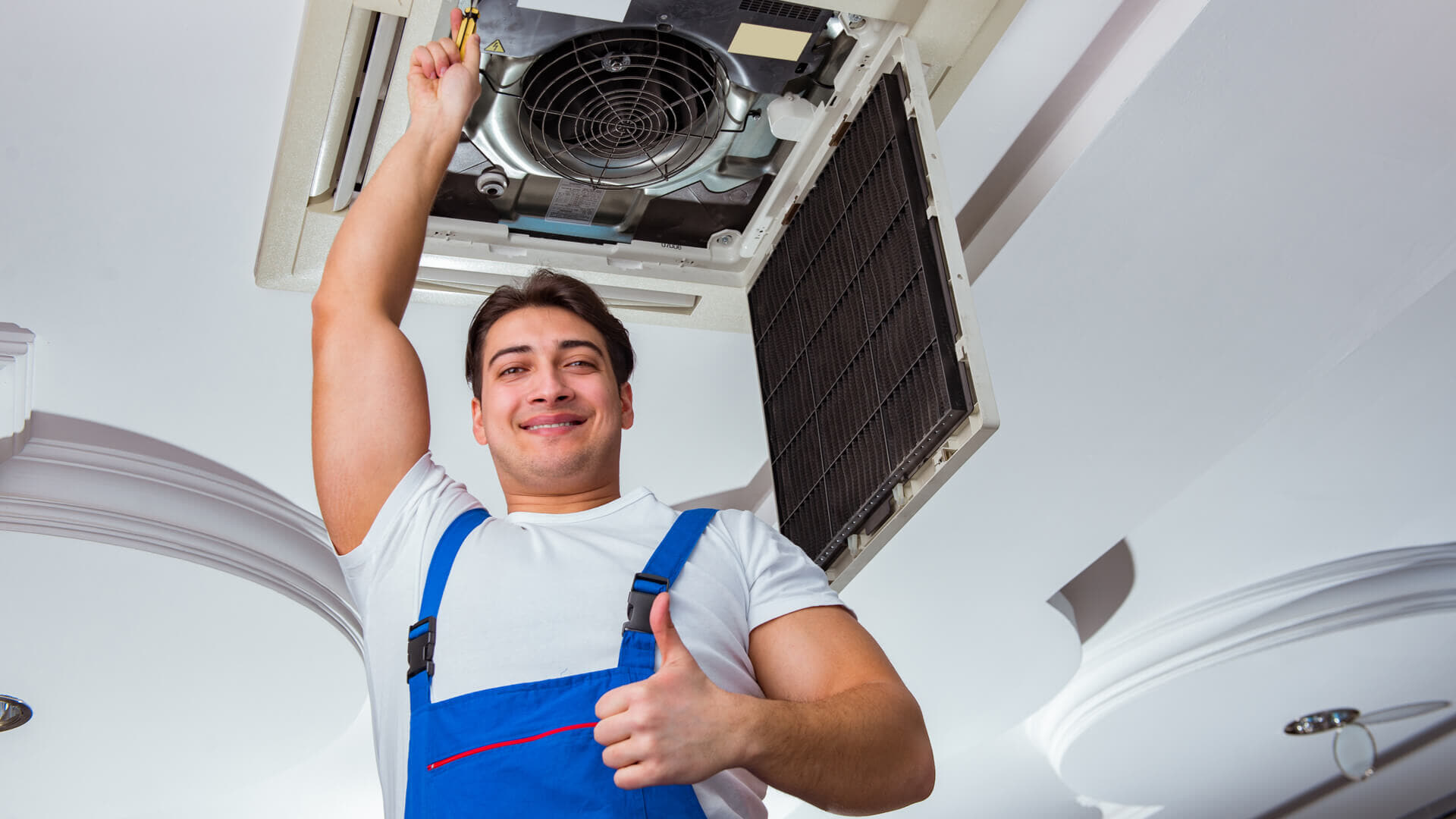
It’s also important to make sure that your contractor is certified. While the requirement for HVAC certification varies state by state, the federal requirement for HVAC workers is EPA certification, which the minimum requirement your contractor will need to work on your system. EPA certification allows technicians to handle the refrigerant involved with the compressor and air conditioning component of the HVAC system.
Replacing Components
More often than not, issues with HVAC systems will require replacing one or more of the components within the system. The most common replaced element is the compressor, but other aspects may need replacement over time.
The most important factor to remember when it comes to replacing components is realizing that the replacement of a piece does not necessarily increase the efficiency of the unit. For example, let’s say your home’s HVAC system takes too long to cool. Your contractor might suggest replacing the compressor, but if this replacement uses the same type of compressor, you may not be reducing the length of time it takes to cool your living space. Be wary of replacing components that do not improve efficiency but rather expand the lifespan of the unit. In some cases, replacing a system entirely is more cost-effective than replacing one piece alone.
HVAC Brands
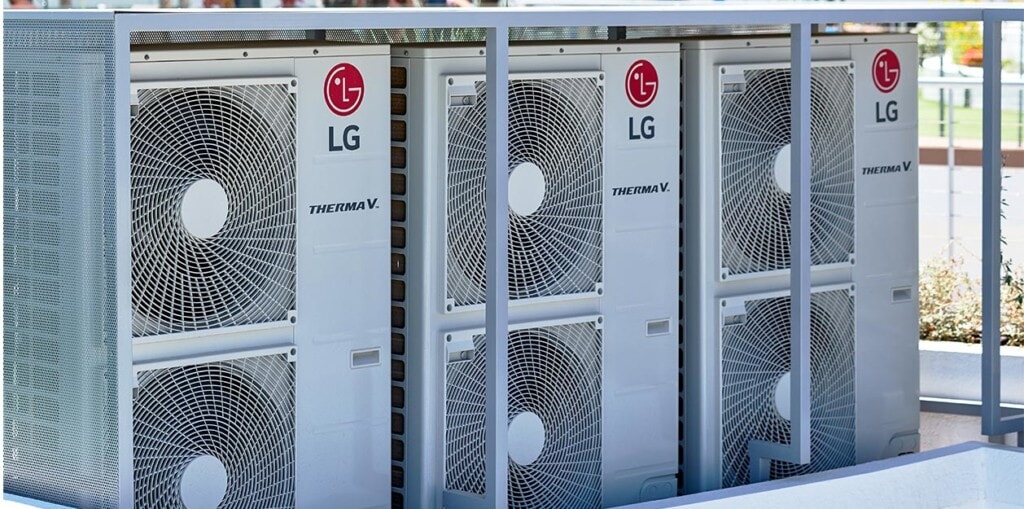
Finally, if you’re in the market for an HVAC system, we want to make a few recommendations on companies to research. While there are many HVAC manufacturers out there, the following brands are known to be reliable and long-lasting.
Portable HVAC Brands
The portable HVAC or portable AC market is dominated by two major types of portable units: single and dual-hose units. Much like with single and multi-stage units with the central HVAC system, single and dual-hose units vary in efficiency and strength. Dual-hose units utilize two means of taking in outside air and releasing warm indoor air, making them a better bet overall. Companies like Whynter and Honeywell excel at this design.
There are also mid-range portable HVAC systems that operate for the most value for the dollar. For those looking for a cost-effective means of cooling their home, consider an LG or a BLACK+DECKER unit. For other categories of HVAC, like mini-split or window-mounted units, these companies have offerings that are just as great.
Central HVAC Brands
For multi-split central HVAC systems, the popular names are often the most reliable. Mitsubishi, for example, may be known for automobiles, but their central air cooling and heating systems are reliable and built to last. Others in this market include Goodman, Carrier, and American Standard. In recent years Maytag has also built a name for itself with eye-catching compressors and slick advertising. While there are other models by other manufacturers that are worth consideration, sticking with one of these units is going to serve you well.
Final Thoughts
When it comes to buying an HVAC unit, the category is often more important than the brand itself. As we’ve said before, the central air system that functions on a forced air system and utilizes a multi-split design is the most popular means of American air conditioning. This setup is the most effective, efficient, and programmable. It will cost, however, the most amount of money.
The next step down is a ductless mini-split that utilizes a smaller compressor and hoses instead of ducts. These units are also worth considering for those who want to split the difference between a central air system and a window-mounted or portable system.
The classic window or wall-mounted system will appeal to the typical apartment dweller but may be too loud and bulky for some. Finally, the portable unit is the bulkiest and certainly the loudest, but one that is also affordable and almost effortless to customize and move.
In either case and any category, it is up to you to do your research about which brand will appeal to you. Many companies focus on improving one aspect of the HVAC system and utilizing this as their main selling point. This can include quiet functionality, fast dehumidification, and smart controls like phone applications.
No matter which HVAC system you choose—from the most affordable portable unit to the most expensive central air system—we hope that we’ve helped for find the best way to experience heating, ventilation, and air conditioning.

